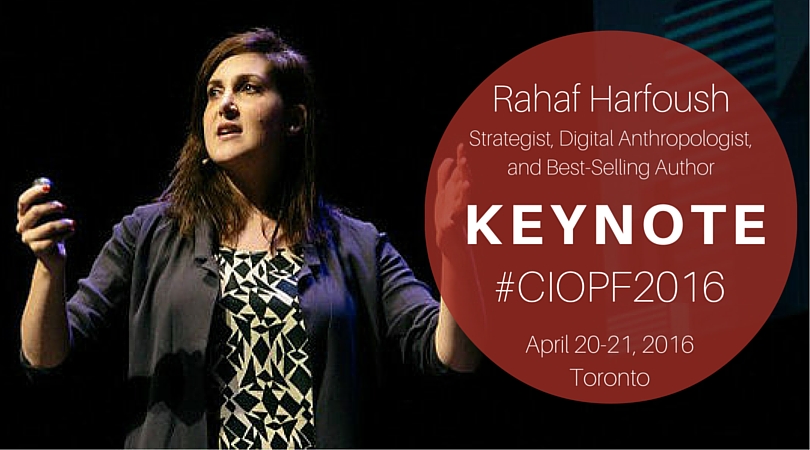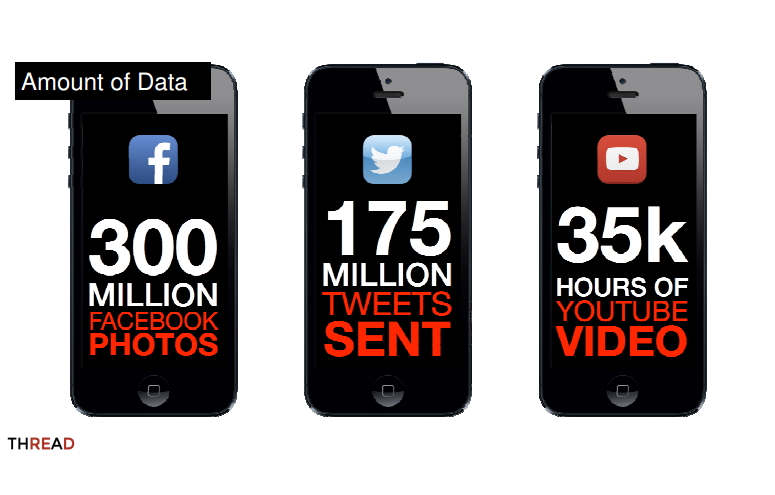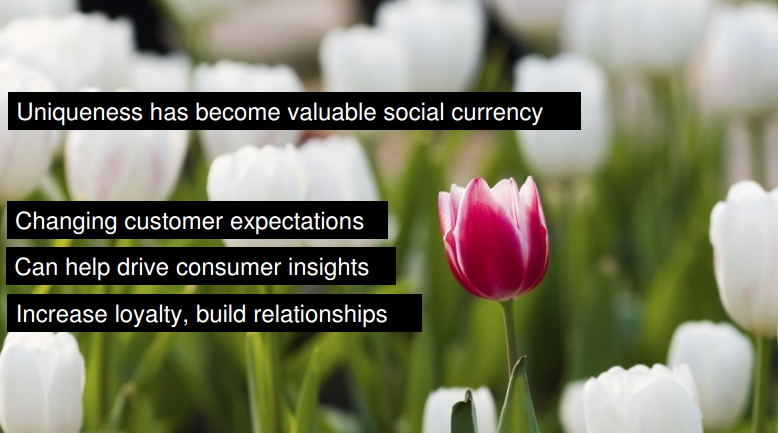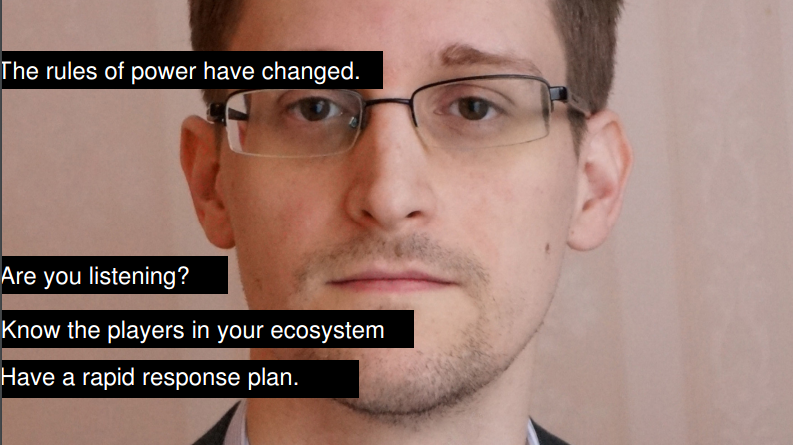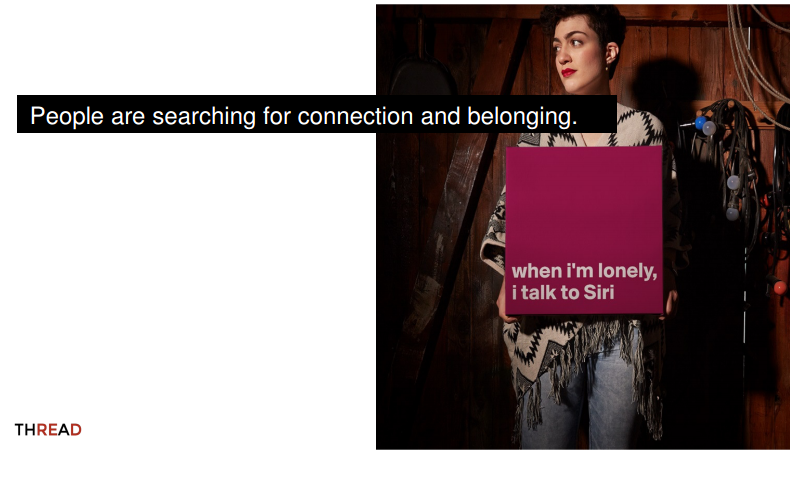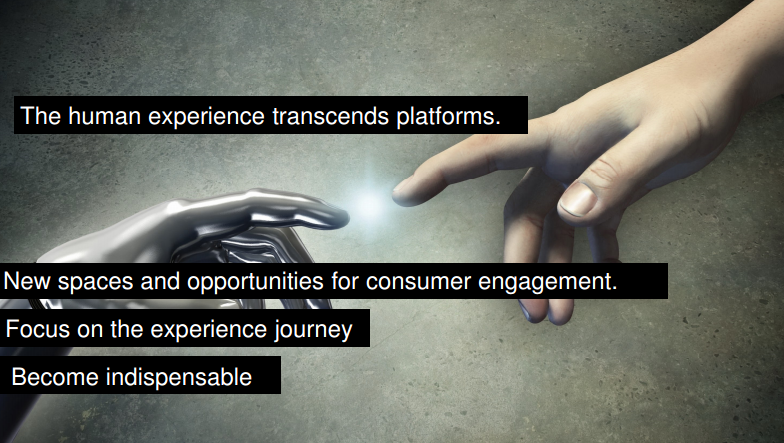Reflections on CIO Peer Forum 2016 keynote presentation by Rahaf Harfoush. Digital Anthropologist and Author
By: Ron Babin
In a keynote presentation titled, Human Centric Analytics – Big Data, Micro-Influence and Search for Meaning, Rahaf Harfoush spoke eloquently and energetically about the importance of data as our digital DNA. Data allows us to better understand ourselves as individuals, as leaders and as consumers. Rahaf’s work is focused on how to create experiences that are more meaningful based on our digital DNA.
In her presentation Rahaf identified five trends that impact our behavior as people.
TREND 1: Data Abundance
This trend describes the evolution of data which has moved from scarce to abundant, expensive to cheap, high barrier to entry to a low barrier that empowers individuals, and from slow change to rapid change.
Throughout her presentation Rahaf peppered the audience with current examples: e.g. 300 million Facebook photos are uploaded daily; 50 billion connected devices will be available in the next 10 years providing data access to and from us.
She also pointed out how data overload affects us. We feel overwhelmed by the never ending onslaught of data. Consumers are searching for meaning in the data, trying to find the right data signal in all the noise. For example she described an app called Couple which provides a private space for two people, and has grown to over 1 billion messages in a very short time.
Rahaf’s overall comment on this trend is the importance of data for creating meaningful space for individual consumers.
TREND 2: Hyper-Customization
This trend is the ability to scale and customize at rapid speed. Rahaf cited e-Harmony, which uses a data-centric approach with hundreds of variables to match compatibility on a much deeper level, as an example. eHarmony claims 242 marriages per day result from their services.
Rahaf also referred to a website that determines how it is presented to you through an adaptive algorithm. She suggests that mass customization will become the new norm. As employees, as citizens, as customers, we will expect customization. She cites another example of the health pill sensor which allows a doctor to customize treatment for a specific patient, and to ensure that the patient is following the prescription.
TREND 3: Micro-Influence
In this trend Rahaf describes the ability that we have as individuals to influence others around us and to take on big organizations with disruptive change. She describes how a 21-year-old waitress named Molly took on the Bank of America because they were charging a $5 fee each time she used her debit card. Molly used Facebook, Twitter and Change.org (a petition website) to gather 300,000 signatures which forced Bank of America on November 1 to rescind the $5 policy. The individual took on the bank and won. In Rahaf’s view, truth will overcome sleek marketing campaigns. There is no secrecy or hiding behind the corporate veil. She mentions Ed Snowden as an example of how the rules of power have changed.
Rahaf suggests that you must know the players in your eco system because all individuals have power and organizations must have a rapid response plan.
TREND 4: Shared-value Tribes, Geo-agnostic Communities
Social networks, mobile computing and ubiquitous Internet have allowed specific topics for selected individuals to become successful without being in the same location. For example, a unique website called Clown Dating provides a matching service for people who like clowns. A more impactful example is Bernie Saunders’ campaign to raise funds for his nomination, which has surpassed all other records with a total of $6.5 million collected to date with an average contribution of $27.
There is a dark side to these tribes as well, with people searching for meaning on the Internet: “When I’m lonely I talked to Siri.” Rahaf identified a social shift, with a higher degree of electronic interconnectedness but an increasing number of lonelier people. The Facebook effect only shows friends who are happier while the individual feels lonelier.
TREND 5 – Dissolution of Boundaries
The retail store and other consumer experiences are changing as app replaces reality. Rahaf described IKEA’s augmented reality that allows you to place an image of their furniture in your house to see what it will look like. She described retail apps where the screen responds to you and customizes the price based on your history and profile.
In conclusion, Rahaf’s presentation was exhilarating, thought-provoking and in some areas a little bit scary. She challenged all of us to understand how these trends could affect us as individuals and as a society so that we can better answer the question: “what do we want?”
